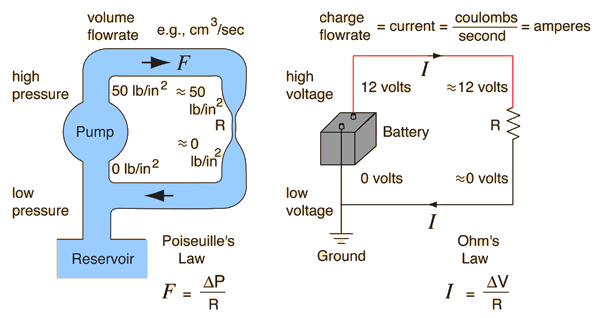Ground-Reservoir Analogy
The function of a ground wire in an electric circuit is in many ways analogous to the reservoir attached to the water circuit. Once the pipe is filled with water, the pump can circulate the water without further use of the reservoir, and if it were removed it would have no apparent effect on the water flow in the circuit.

The reservoir provides a pressure reference, but is not part of the functional circuit. Likewise, the battery can circulate electric current without the ground wire. The ground provides a reference voltage for the circuit, but if it were broken, there would be no obvious change in the functioning of the circuit. The ground wire protects against electric shock and in many cases provides shielding from outside electrical interference.
This view of a ground is not adequate to explain the function of an appliance ground wire because just a connection to the earth is not sufficient to trip a circuit breaker in case of an electrical fault. To be effective in preventing shock hazards, an appliance ground must connect back to the supply through the neutral wire.
Nevertheless, the image of the earth as a charge reservoir is helpful in understanding the energetics of the entire electrical supply system. At a power plant, charge can be drawn from the earth and the generation process does work on the charge to give it energy. This energy is described by stating its voltage (1 volt = 1 joule/coulomb = energy/charge). The energy can be transported cross-country at high voltages and then supplied to end users at lower voltages with the use of step-down transformers. The energy can then be used and the charge discharged to the earth. The charge upon which the work is done at the power plant does not have to be transported cross-country, and the "spent" charges do not have to be transported back to the power plant, but just dumped into the "reservoir".
All such analogies have their drawbacks, and you can generate spirited discussions at all levels of expertise about analogies for grounding. Some object to the reservoir approach because is creates the image of some sort of limitless supply of charge, and that there is something "special" about it. It also creates the mistaken impression that you can pull some charge out of it without putting some in. The Earth is just a good conductor of charges, but like all electrical circuits, must ultimately make a closed circulation path in order to conserve charge ( a hard and fast conservation law).
|





